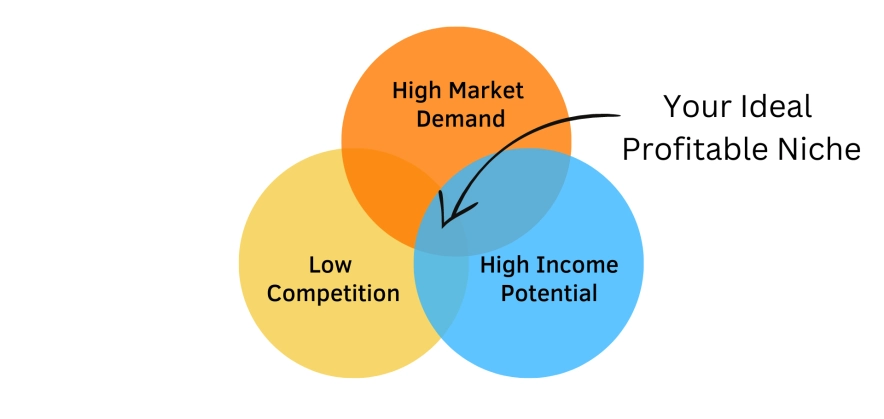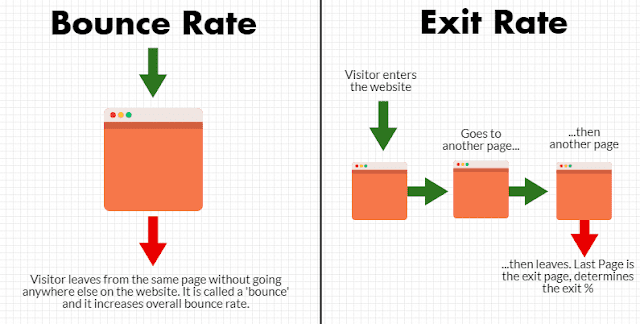9 Common Affiliate Marketing Mistakes New Marketers Make and How to Avoid Them

Some affiliate marketers thrive, while others struggle to make a single sale. Why? It’s not just luck or choosing the right niche. The ones who succeed know how to avoid common mistakes that hold others back.
I’ve seen so many beginners jump in full of excitement, only to hit a wall because of small, avoidable missteps. I know because I made some of them myself.
The good news is that spotting these mistakes early gives you an edge. Avoiding them isn’t just about protecting your earnings—it’s about building a strategy that actually works.
When I started, I wasted time on things that didn’t move the needle. But once I focused on the right approach, everything changed. With a little planning and the right mindset, affiliate marketing can become a steady and profitable income source.
If you’re looking to break into affiliate marketing, this guide will help. I’ll walk you through the biggest mistakes marketers make and how to avoid them.
But trust me, this isn’t just about selling products. Real success comes from building trust, being helpful, and actually connecting with your audience. That’s what made the difference for me.
Key Takeaways
- Success in affiliate marketing starts with a niche you genuinely care about.
- Less is more—promoting a few great products builds trust faster.
- People buy solutions, not just products—focus on their needs first.
- An email list is your secret weapon for long-term profits.
- Quality content isn’t an option; it’s the foundation of your success.
- Diversify your traffic sources to avoid relying on one platform.
- Patience and persistence separate winners from quitters in affiliate marketing.
Common Affiliate Marketing Mistakes New Marketers Make and How to Avoid Them
Now, let’s dive into the nine biggest mistakes new marketers make—and how to dodge them.
1. Choosing the Wrong Niche
Let’s talk about one of the biggest mistakes in affiliate marketing—picking the wrong niche. Trust me, I’ve been there. When I first started, I thought I could promote any product and make money. Sadly, that plan didn’t work out so well.
Choosing a niche that doesn’t align with you or your audience leads to disappointment. It’s like trying to sell fancy coffee to energy drink lovers—they just don’t care.
And when you’re not excited about your chosen niche, trust me, it shows. Creating content for a topic you’re not passionate about can be tedious, and your readers can discern your lack of interest.
On the other hand, when you enjoy your niche, everything changes. Content flows naturally, engagement grows, and you understand which products actually solve people’s problems.
Read Also: How to Choose the Best Niche for Your Affiliate Marketing Business
Consequences of Picking the Wrong Niche: No Engagement, No Sales
When you don’t care about your niche, your audience won’t either. Content feels forced, engagement stays low, and conversions barely happen.
Affiliate marketing isn’t just about pushing links—it’s about solving problems and building trust. If you can’t connect with your audience or provide real value, they won’t stick around, let alone buy through your links.
Solution: Find the Sweet Spot Between Passion and Profit
The key is choosing a niche that balances three things: your interest, audience demand, and competition.

For instance, I picked digital marketing tools because I use them daily, and people are constantly searching for better solutions. To make sure there was demand, I used free tools like Google Trends and AnswerThePublic to see what people were asking.
You can also check: 10 Best Niches for Affiliate Marketing in 2025
Instead of chasing high commissions, focus on a niche where you can add value and stay consistent long-term. Don’t just go after what seems profitable.
Pick a niche you can stick with for years. It’s not just about making money—it’s about building trust and offering real value. And when you get that right, success will follow.
If you are still struggling to pick the right niche, I recommend Niche Navigator. It walks you through finding a profitable one in just an hour so you don’t waste time on the wrong choice.
2. Promoting Too Many Products
Trying to promote too many products at once is one of the fastest ways to lose credibility. It’s tempting to think more products mean more chances to earn, but it rarely works that way.
Instead of helping your audience, you overwhelm them with too many choices—and they end up buying nothing.
The Problem: Lack of Trust and Focus
When every other post is about a different product, people stop seeing you as a trusted source. Instead of viewing you as someone who genuinely wants to help, they see a marketer who just wants commissions.
That’s a big red flag. If you’re constantly switching between topics, it’s also harder to create deep, valuable content. You can’t give real recommendations if you haven’t tested, researched, and understood the products yourself.
Here’s the Solution: Pick a Few Solid Products and Stick to Them
Focusing on a handful of high-quality, relevant products builds trust. Instead of being “just another affiliate,” you become someone who knows their stuff. You’ll be able to answer questions, provide real insights, and actually help people make smart buying decisions.
Think of it this way: If you’re always jumping from product to product, why should anyone trust your opinion? But if you consistently talk about a few great products, share useful tips, and show how they work, people will listen—and that’s when the real sales happen.
Read Also: How to Choose the Right Products to Promote as an Affiliate
3. Ignoring Audience Needs
Another big mistake in affiliate marketing is focusing too much on commissions instead of helping people. If your only goal is to push products, your audience will notice—and they won’t stick around.
User intent is the key to success in affiliate marketing. Every time someone clicks, searches, or visits your site, they have a specific goal in mind. They might want a product review, a solution to a problem, or to explore options before deciding.
The Problem: Low Engagement and Fewer Sales
When you ignore what your audience actually needs, engagement drops. People won’t click your links or trust your advice if they feel you’re only in it for the money.
Imagine asking for help choosing a laptop, and instead of getting useful advice, someone just hands you a random affiliate link. Would you buy? Probably not. The same thing happens in affiliate marketing. If your content doesn’t genuinely help, people won’t take action.
The Solution is to Focus on Solving Problems First
Before promoting anything, ask yourself: How does this help my audience? If you can’t answer that, it’s the wrong product. Successful affiliate marketers recommend products because they solve real problems, not just because they pay well.
To understand your audience better:
- Read comments, reviews, and forum discussions to see what questions people ask.
- Use tools like AnswerThePublic and Google Trends to find common problems.
- Engage with your audience—listen to their struggles and provide real solutions.
When you genuinely help people, trust builds naturally. And when people trust you, they’re far more likely to buy through your recommendations.
4. Not Building an Email List
Email marketing is very crucial, and ignoring it is a big mistake in affiliate marketing. Many beginners rely only on social media or search traffic, hoping visitors will return on their own.
But here’s the truth—most people won’t come back unless you give them a reason to. That’s where an email list comes in.

Here’s How to Build a Strong Email List for Your Affiliate Marketing Business
The Problem: Losing Potential Buyers
If you’re not collecting emails, you’re missing out on repeat traffic and long-term relationships. Let’s say someone visits your site, clicks around, and leaves without buying. Without their email, they’re gone forever.
Even if they were interested, they might forget about you. An email list keeps that connection alive, giving you more chances to help and sell later.
Solution: Use Lead Magnets + The Right Email Tool
People won’t give you their email for nothing. Offer something valuable, like a free guide, checklist, or discount. For example, if you promote digital marketing tools, a free “Affiliate Marketing Starter Kit” could work.
Once they sign up, you need the right email marketing tool to manage and engage your list. GetResponse and ConvertKit are my top recommendations.
GetResponse is great for automation, landing pages, and webinars. ConvertKit is perfect for creators and bloggers who want simple yet powerful email marketing.
Read Also: 12 Best Free Email Marketing Tools You Need For Your Affiliate Business
Email isn’t just about selling—it’s about staying in front of your audience. When done right, it builds trust, boosts engagement, and increases long-term sales.
If you need more strategies on how to build your email list fast, I recommend successful strategies on how to build an email list fast. It breaks down simple, proven methods to attract subscribers and turn them into loyal buyers.
5. Publishing Low-Quality Content
Posting low-quality content can hurt your chances of engaging with your audience.
In affiliate marketing, high-quality content is key to success. Many marketers forget its importance, leading to low conversion rates and less credibility.
Your content should inform and engage, adding real value. This value helps build trust and authority, making your audience more likely to become loyal customers.
Keeping your content high-quality means you meet your audience’s needs well. If you don’t understand your audience, you might promote the wrong products. Using analytics tools helps you see what your audience likes, hence guiding your strategy.
Also, search engines prefer high-quality, user-centered content. They boost their rankings, which leads to more organic traffic for you.
By concentrating on producing valuable, engaging, and easy-to-read content, you’ll draw in new visitors and keep them returning.
Here is Why Valuable Content Wins in Affiliate Marketing (And How to Create It)
In summary, focusing on quality content boosts conversion rates and builds a strong business. As you work on this, keep learning, be patient, and create content that truly helps your audience.
The Impact of Quality on Engagement
Bad content can damage your reputation and push visitors away, lowering your conversion rates. About 70% of online business income from content creators comes from affiliate marketing.
This shows how vital it is to make engaging and reliable content. If your content seems off or poorly made, people won’t stick around and might look elsewhere for advice.

Strategies for High-Quality Content Creation
To make top-notch content, try these tips:
- Do deep research to share accurate and useful info.
- Use the right keywords to make your content easier to find.
- Pay close attention to detail in your writing and presentation.
- Build real connections with advertisers and your audience.
- Monitor the performance of your content to identify potential areas for improvement.
Using these strategies for quality content will help you make content that truly connects with your audience and boosts engagement.
6. Ignoring SEO and Traffic Strategies
Neglecting SEO is a mistake most affiliate marketers make. Relying solely on social media or paid ads might bring short-term traffic, but it’s unpredictable and expensive.
Without a solid SEO strategy, your content can get buried under millions of other pages, making it hard for potential buyers to find you.

Why SEO Matters for Affiliate Marketing
SEO helps you attract consistent, organic traffic from search engines. Unlike paid ads, organic traffic doesn’t disappear when you stop spending money.
When done right, SEO brings in visitors who are already looking for what you offer, making conversions much easier.
Best Free SEO Tools to Improve Your Rankings
You don’t need a massive budget to optimize your content. Several free tools can help you find profitable keywords, analyze competitors, and improve your rankings.
- Ubersuggest – Great for keyword research, site audits, and backlink analysis. It provides search volume, competition level, and content ideas.
- Google Keyword Planner – A free tool from Google that helps you discover keywords people are searching for.
- AnswerThePublic – Helps generate content ideas based on common search queries.
- Google Search Console – Tracks your website’s performance in search results and highlights issues that might hurt rankings.
Read Also: 10 Most Powerful SEO Tools Every Affiliate Marketer Needs to Boost Rankings and Earnings
Targeting Long-Tail Keywords for Higher Conversions
Many beginners focus on broad, highly competitive keywords, making it tough to rank. Instead, targeting long-tail keywords (phrases with three or more words) is a smarter approach. These keywords have less competition and attract highly targeted traffic.
I recommend KWFinder by Mangools as a perfect tool for this. It helps you discover low-competition, high-intent long-tail keywords that can drive quality traffic to your site.
Instead of competing for a broad term like “best laptops,” you could target “best budget laptops for students” and attract visitors who are closer to making a purchase.
Read Also: How to Drive Organic Traffic to Your Affiliate Links Using Long-Tail Keywords
Optimizing Title Tags and Meta Descriptions
Title tags and meta descriptions are crucial for getting clicks. A good title tag uses the right keywords and describes your content well. Meta descriptions give a quick summary, making people want to visit your site.
Search engines like original and high-quality content. Using long-tail keywords in title tags can help you rank better and attract the right audience.
Importance of Internal and External Linking
It is important to use both internal and external links. Quality backlinks improve your site’s credibility and are key to SEO success. Internal links help users find related content, making your site easier to use.
Search engines value content that offers a good user experience. Good linking strategies are essential for your SEO success.
Here is the summary.
| SEO Element | Best Practices | Enhances navigation, reduces the bounce rate |
|---|---|---|
| Title Tags | Use keywords, keep it under 60 characters | Increases click-through rates, boosts rankings |
| Meta Descriptions | Summarize content, use action-oriented language | Encourages clicks, improves visibility |
| Internal Links | Link to relevant pages within your site | Enhances navigation, reduces bounce rate |
| External Links | Link to authoritative sources | Builds credibility, improves content quality |
Diversify Your Traffic Sources
While SEO is a powerful long-term strategy, it’s wise to mix in other traffic sources. Social media, email marketing, and even paid ads can supplement your organic efforts.
But never rely on just one platform—algorithms change, and trends shift. A balanced approach ensures consistent traffic and long-term growth.
If you want to build a sustainable affiliate business, start focusing on SEO today. You can use free tools, target long-tail keywords, and watch your traffic grow.
Must Read: Best 15 Ways to Drive Traffic to Your Affiliate Links (Tested and Proven)
7. Overlooking Transparency and Trust
Trust is everything in affiliate marketing. If people feel misled, they’ll leave and never return. Some marketers try to hide affiliate links or push products without making it clear they earn a commission.
That might work once or twice, but long-term success comes from being upfront. When you recommend a product, your audience should know why.
A simple disclosure like, “This article contains affiliate links, and I may earn a commission at no extra cost to you,” builds credibility and keeps you legally compliant.
Like the one below;

Misleading promotions hurt your reputation. If you hype up a product just to make a sale and it doesn’t deliver, people won’t trust you again. They’ll remember the bad experience and ignore your future recommendations.
Instead, promote products you believe in, and be honest about their pros and cons. A balanced review makes you look more credible, and when people see that your suggestions actually help them, they’ll return for more.
Affiliate marketing is about relationships, not just sales. The goal isn’t to trick people into clicking links—it’s to guide them toward the best solutions.
Trust takes time to build but can disappear in seconds. Being transparent from the start sets you apart and creates a loyal audience that values your recommendations.
Read Also: How to Disclose Affiliate Links Transparently and Build Loyal Audiences
8. Giving Up Too Soon
Affiliate marketing takes time. Many beginners jump in expecting quick results, and when commissions don’t roll in fast enough, they quit.
The reality is, success doesn’t happen overnight. It takes months of testing, learning, and refining your approach. The ones who stick with it, even when things seem slow, are the ones who eventually see real results.
Quitting too soon means missing out on long-term rewards. Those first few months of effort might not bring big wins, but they lay the foundation for consistent passive income.
Every blog post, email, or social media post builds momentum. If you stop too early, you never give your efforts the chance to pay off. Instead of expecting instant success, focus on small wins—getting more traffic, better engagement, or higher conversions.
The key is to track progress and adjust as needed. If something isn’t working, tweak your strategy instead of walking away. Study analytics, test different content formats, and refine your approach over time.
Affiliate marketing is a long game, and those who stay consistent, adapt, and keep learning are the ones who turn it into a sustainable income stream.
9. Not Tracking Performance and Ignoring Analytics
Not tracking your performance is like driving blindfolded. You’re moving, but you have no idea if you’re heading in the right direction—or about to crash.
Many affiliate marketers make this mistake, thinking they can just post links and hope for the best. The problem? Without tracking, you don’t know what’s working, what’s failing, or where to focus your efforts.

Ignoring analytics means missing key insights, like which pages bring in the most traffic, which links actually convert, and what content resonates with your audience.
If you’re promoting five products but only one gets clicks and sales, wouldn’t you want to know which one? This is where tools like Google Analytics, ClickMagick, and Pretty Links come in handy.
Google Analytics helps track website traffic and user behavior, while ClickMagick lets you monitor link clicks and conversion rates. Pretty Links (great for WordPress users) shortens and tracks your affiliate links, making them look clean and professional.
I always recommend Google Analytics for a broad view of your traffic and ClickMagick if you want precise tracking on individual links. The more data you collect, the better decisions you can make. If you’re serious about scaling your affiliate business, tracking should be a habit—not an afterthought.
Read Also: Top 14 Free Link Tracking and Management Tools for Affiliate Marketers
Conclusion
Affiliate marketing isn’t a quick win—it’s a long-term game that rewards those who stay committed. Mistakes happen, but they don’t define your journey. What matters is how you respond.
Don’t get discouraged, see every setback as a lesson. Stay patient, keep your focus, and remember that success comes from consistent effort, smart decisions, and a willingness to adapt.
The key is to keep learning and testing. Strategies that work today might need adjustments tomorrow, and that’s part of the process.
Track your results, refine your approach, and never stop improving. Whether it’s SEO, email marketing, or building trust with your audience, small, steady improvements add up over time.
If you want to turn affiliate marketing into a real income stream, don’t just read—take action. Apply what you’ve learned, experiment with different tactics, and keep pushing forward.
The ones who succeed aren’t the ones who never made mistakes—they’re the ones who kept going. Stay the course, and the results will follow.
Frequently Asked Questions
How long does it take to see results in affiliate marketing?
It depends on your niche, strategy, and effort. Some affiliates start earning within months, while others take a year or more. Success comes from consistent content creation, audience engagement, and optimizing your strategies. Patience is key—affiliate marketing is a long-term game.
Do I need a website to succeed in affiliate marketing?
A website helps build credibility and organic traffic, but it’s not mandatory. Many affiliates succeed through YouTube, social media, or email marketing. However, having a website gives you more control and allows you to rank on search engines for long-term traffic.
What are the best traffic sources for affiliate marketing?
SEO-driven blog traffic, YouTube, social media (Pinterest, Instagram, Twitter, TikTok), and email marketing are strong sources. Paid ads work but require testing and investment. The best approach is to diversify and not rely on one platform.
How do I choose the right products to promote?
Look for products that align with your niche, solve problems, and have a good reputation. Research customer reviews, commission rates, and refund policies. Promoting low-quality products can damage your credibility and reduce long-term success.
Why am I not getting sales despite having traffic?
Traffic alone doesn’t guarantee conversions. Common reasons include unqualified traffic, poor product selection, weak calls-to-action, or lack of trust. Analyze your audience’s behavior, refine your content, and build a stronger relationship with your visitors.







Thanks for sharing. I read many of your blog posts, cool, your blog is very good.